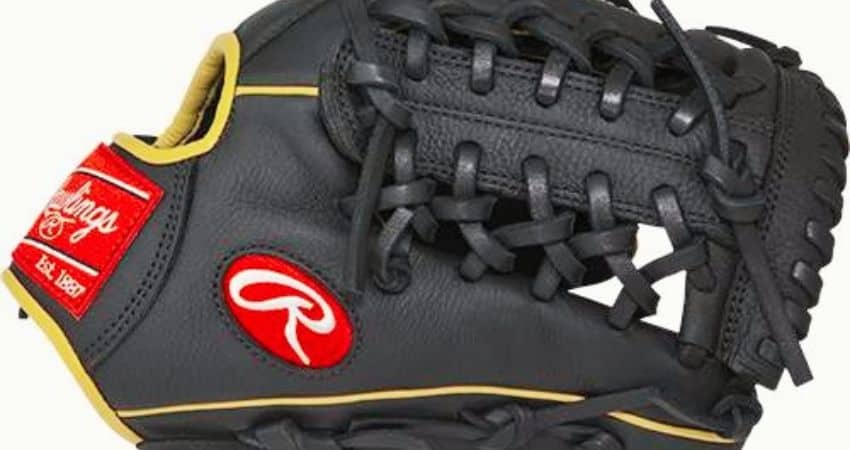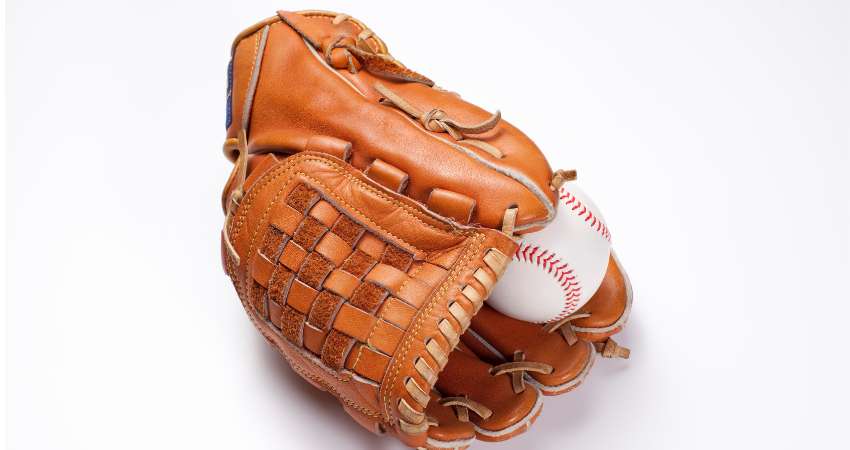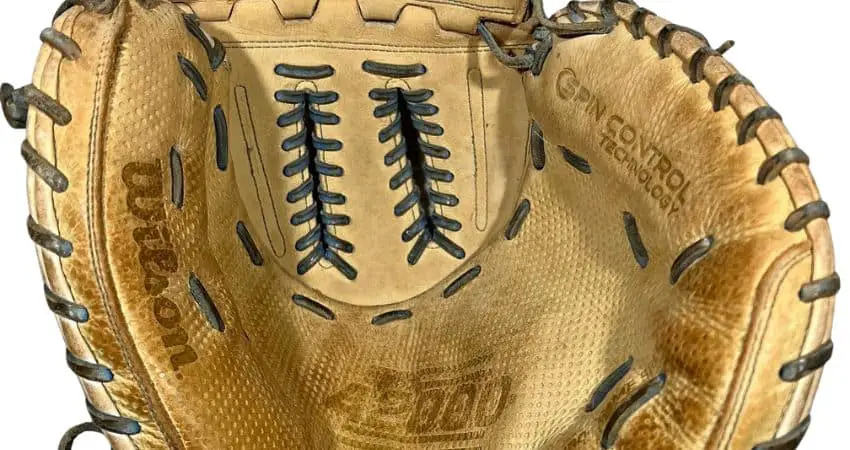If you ask me, baseball glove care should be a fundamental part of training for any player in the making. Back in my days, I used to struggle with making my one pair of gloves last more than one season. But before you judge me – I had no one teaching me the basics of taking care of my baseball glove.
Now, a baseball glove is not exactly a cheap investment. Any decent glove worth its salt will easily cost you more than a hundred dollars which on a teenager’s pocket money is pretty expensive. So, it’s natural to want to try and make it last a good couple of seasons before you toss it away.
Understanding the right way to take care of your glove will help you achieve exactly that. This includes knowing how to break it in the best way, how to store it, and all the things you can possibly do to make it last longer. If you didn’t have anyone telling you all these things, then let me be the one to break it down for you.
Here, I will talk about the basics of taking care of a baseball glove so that you don’t have to burn through new gloves every season. Let’s get to it.
How to Take Care of a Baseball Glove – The Basics
I’ll come right out and say it – there’s no big secret to taking care of your baseball glove. A bit of routine maintenance after each game goes a long way in enhancing its overall durability. You don’t need to pull up weird cleaning tricks or anything – just the basics are more than enough.

Here are a couple of basic tips that I think will help you take better care of your baseball glove.
Tip #1: Regular Cleaning
The first tip is pretty simple – clean your baseball glove every time you are done with it, whether it’s a competitive match or a training session. However, even though it seems like such a rudimentary thing to do, you would be surprised how easy it is to forget about it after a big game.
And it’s understandable. After a game, it’s natural to want to spend time with your friends, talking about all the big moments, but before you get to that, make sure you do your due diligence. What that means is to take your glove out of your equipment bag, wipe off all the dirt and debris with a clean piece of cloth and store it properly.
Tip #2: Proper Storage
Speaking of storage, you might not know this – but where you store your glove plays a huge role in its overall condition and durability. You see, baseball leathers are built-to-last, but poor storage conditions can cause them to deteriorate pretty quickly. And storing it somewhere with direct sunlight or a lot of moisture is a strict no-no.


You want to make sure you store your baseball glove in a cool, dry place that stays relatively close to room temperature. Make sure there are no direct heat sources nearby. You also want to avoid keeping it in your equipment bag overnight as it might get smelly from all the cooped-up moisture in the bag.
Tip #3: Keep it Dry
Baseball being an outdoor sport, there are times when you have no option but to play in the rain. Now before you get all excited thinking playing baseball in the rain is pretty cool and all, think of how much the rainwater can affect your glove. The leather soaks up all the water, gets heavy, and starts degrading.
While you cannot keep it dry all the time, you should aim to keep your glove away from unnecessary water exposure. And if it does get wet, you should try to dry your baseball glove as quickly as possible. I already talked about how you can dry baseball gloves quickly in another article that you might want to read through.
Tip #5: Protect the Insides
The next tip goes back to my first advice – cleaning your gloves. Now, when I said cleaning, you might think that I meant cleaning only the exterior shell of the glove. While you need to clean the exterior, you need to think about the insides of the glove too.


Think about it – the inside of your glove absorbs all the sweat and moisture from your hands, and over time it adds up. So, you need to clean out the insides of your baseball glove from time to time. If you want to protect the insides, you can try wearing a lighter batting glove inside the bigger baseball glove.
Tip #6: Use Glove-Friendly Products
I think it should go without saying that you should deep clean and condition your baseball glove using a baseball glove conditioner every now and then. The leather in your baseball glove requires a bit of conditioning after a couple of months, and without it, the quality of the leather can degrade.
But you shouldn’t just use any leather oil or conditioner that you can get your hands on. Ideally, you only want to use leather conditioners that are designed specifically for baseball gloves. Some alternative baseball glove oil, such as Lanolin oil, can work wonders, but you should use them sparingly and only as a last resort.
Tip #7: Preserve the Shape
Baseball gloves, when you buy them new, go through a break-in period where you have to use them so that it gets comfortable in your hands. It feels stiff and almost unplayable in a competitive setting without breaking in a glove. There are ways to speed up the break-in time, but personally, I recommend just playing catch with it.
During the mid-season break, you will probably be storing your gloves away for a while. Now, if you simply put it in the locker, when you get it out, you might notice that the glove’s shape is weird, and you need to break it in all over again. To prevent that, you can put a softball in the glove’s pocket and wrap it up with a belt when storing it. This will help preserve the shape of your glove.
Tip # 8: Inspect Regularly
The last tip I have for you is to simply inspect your glove from time to time. And by inspection, I mean a thorough, section-by-section inspection, not just a glance over. With regular inspection, you will be able to catch any issues in the leather and react to them before things get too complicated.
While inspecting the gloves, make sure you check between the fingers and the webbing for open seams. If you find any broken laces, you should repair or replace them as soon as possible. This would help extend the overall lifespan of the glove and also prevent any accidents while playing with it.
How Often Should You Oil a Baseball Glove?
I’m sure you have noticed how I emphasized the importance of oiling and conditioning the leather in your baseball glove from time to time. However, if you are a complete rookie with little to no idea about baseball glove care, you might be confused about the frequency of oil use.
And over-oiling is a real thing in baseball gloves. Applying too much oil or conditioner on the leather can do more harm than good. If you apply without thought, you might find that the leather condition degrades sooner than normal. Ideally, you should oil your glove anywhere from once per week to once per month, depending on how much you use it. If you only bring it out to play every so often, you don’t need to oil it every week. Once per month will suffice in that case.
How Can I Make My Baseball Glove Last Longer?
As I already said, there’s really no secret to making your baseball glove last longer. All you have to do is treat it with respect and take care of it every now and then. I have seen baseball gloves under 200 Dollars last more than three seasons simply because their owner was careful with them.
And I also saw how some expensive, top-tier baseball gloves struggle to deliver their top performance only after a couple of months. So, it’s really in your hands how long your baseball glove will last.
To ensure it lasts longer – clean it regularly, moisturize and condition the leather when it feels dry and inspect it from time to time. These are the three golden rules to getting the most out of your baseball glove.
The Bottom Line
Taking care of your baseball glove should never feel like a chore if you respect the game and your gear. Even the most expensive baseball glove in the world struggles to last more than a season if you don’t take care of it.
Since you are here, reading this article, this already tells me you have taken your first step in the right direction. With the information you gathered here, you should be able to take better care of your glove and make it last as long as possible. Cheers!
